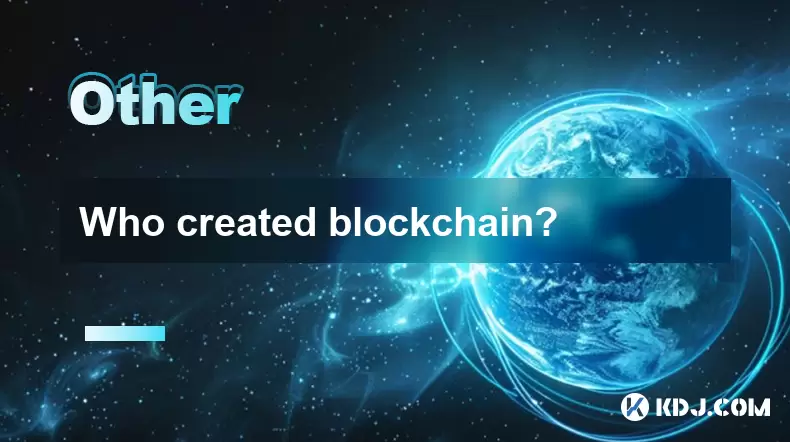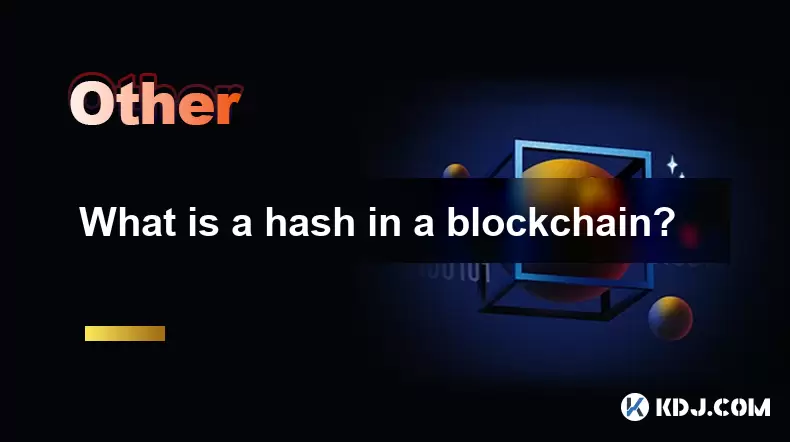-
 Bitcoin
Bitcoin $113900
-1.39% -
 Ethereum
Ethereum $3517
-4.15% -
 XRP
XRP $3.009
1.59% -
 Tether USDt
Tether USDt $0.9997
-0.04% -
 BNB
BNB $766.8
-1.41% -
 Solana
Solana $164.6
-2.38% -
 USDC
USDC $0.9998
-0.02% -
 TRON
TRON $0.3277
0.65% -
 Dogecoin
Dogecoin $0.2023
-1.67% -
 Cardano
Cardano $0.7246
0.05% -
 Hyperliquid
Hyperliquid $38.27
-4.77% -
 Sui
Sui $3.528
-0.52% -
 Stellar
Stellar $0.3890
-0.73% -
 Chainlink
Chainlink $16.16
-2.69% -
 Bitcoin Cash
Bitcoin Cash $539.9
-4.38% -
 Hedera
Hedera $0.2425
-2.00% -
 Avalanche
Avalanche $21.71
-0.97% -
 Toncoin
Toncoin $3.662
5.73% -
 Ethena USDe
Ethena USDe $1.000
-0.02% -
 UNUS SED LEO
UNUS SED LEO $8.964
0.35% -
 Litecoin
Litecoin $107.7
2.33% -
 Shiba Inu
Shiba Inu $0.00001223
-0.40% -
 Polkadot
Polkadot $3.617
-0.97% -
 Uniswap
Uniswap $9.052
-2.49% -
 Monero
Monero $295.1
-3.79% -
 Dai
Dai $0.9999
0.00% -
 Bitget Token
Bitget Token $4.315
-1.85% -
 Pepe
Pepe $0.00001060
0.11% -
 Cronos
Cronos $0.1342
-2.72% -
 Aave
Aave $256.0
-0.87%
Who created blockchain?
Blockchain was created by pseudonymous developer Satoshi Nakamoto in 2009 as the foundation for Bitcoin, combining cryptography and decentralization to enable trustless digital transactions.
Aug 02, 2025 at 05:15 am

What Is Blockchain and Why Does Its Origin Matter?
Understanding who created blockchain begins with recognizing what blockchain actually is. Blockchain is a decentralized digital ledger that records transactions across multiple computers in such a way that the registered transactions cannot be altered retroactively. This technology underpins cryptocurrencies like Bitcoin and has since expanded into various applications including supply chain tracking, digital identity, and smart contracts. The origin of blockchain is critical because it ties directly to the foundational principles of transparency, security, and decentralization. Knowing who developed it helps clarify the intent behind its design and the philosophy that drives its use in the cryptocurrency ecosystem.
The Pseudonymous Creator: Satoshi Nakamoto
The individual or group credited with creating blockchain is known by the pseudonym Satoshi Nakamoto. In October 2008, this entity published a whitepaper titled "Bitcoin: A Peer-to-Peer Electronic Cash System", which introduced both Bitcoin and the blockchain technology that supports it. The whitepaper outlined a system where transactions are verified by network nodes through cryptography and recorded in a public, distributed ledger — the blockchain. Despite extensive research, the true identity of Satoshi Nakamoto remains unknown. Numerous individuals have been speculated to be Nakamoto, including Hal Finney, Nick Szabo, and Dorian Nakamoto, but none have been conclusively proven. What is certain is that the release of the Bitcoin software in January 2009 marked the first functional implementation of blockchain.
How Was the First Blockchain Implemented?
The implementation of the first blockchain began with the launch of the Bitcoin network. The initial block, known as the genesis block or Block 0, was mined by Satoshi Nakamoto on January 3, 2009. This block contained a message embedded in its coinbase transaction: "The Times 03/Jan/2009 Chancellor on brink of second bailout for banks." This headline from The Times newspaper is widely interpreted as a commentary on the flaws of the traditional financial system and a justification for a decentralized alternative. The genesis block is hardcoded into all Bitcoin clients and serves as the foundation of the entire chain. Each subsequent block references the previous one using a cryptographic hash, creating an immutable sequence. This structure ensures that tampering with any block would require recalculating all following blocks, a computationally infeasible task.
The Technical Foundations Behind Blockchain Creation
The creation of blockchain combined several pre-existing cryptographic and networking concepts. Satoshi Nakamoto did not invent all the components from scratch but integrated them in a novel way. Key technologies include:
- Cryptographic hashing, specifically the SHA-256 algorithm, which ensures data integrity.
- Public-key cryptography, allowing users to sign transactions with private keys and verify them with public keys.
- Proof-of-Work (PoW), a consensus mechanism that requires miners to solve complex mathematical puzzles to validate transactions and create new blocks.
- Peer-to-peer (P2P) networking, enabling decentralized communication between nodes without a central server.
The innovation lay in combining these elements into a system where trust is established through code and consensus rather than through intermediaries. The blockchain structure itself is a chain of blocks, each containing a batch of transactions, a timestamp, a nonce (number used once), and the hash of the previous block. This design prevents double-spending and ensures chronological order.
Contributions of Early Developers to Blockchain Evolution
While Satoshi Nakamoto laid the foundation, the evolution of blockchain involved contributions from early developers who maintained and improved the Bitcoin protocol. Hal Finney, a renowned cryptographer, was one of the first to run the Bitcoin software and received the first Bitcoin transaction from Satoshi. He contributed to the refinement of Proof-of-Work and helped debug the early codebase. Gavin Andresen became a lead developer after Satoshi stepped away in 2010, taking responsibility for releasing updates and managing the project’s direction. Other contributors helped implement features like multi-signature transactions and Segregated Witness (SegWit), which enhanced scalability and security. These collaborative efforts ensured the resilience and adaptability of the blockchain network.Can Blockchain Exist Without Cryptocurrency?
Although blockchain was created to support Bitcoin, the technology has since been adapted for non-cryptocurrency uses. However, in its original and most secure form, blockchain relies on cryptoeconomic incentives provided by cryptocurrency. Miners are rewarded with Bitcoin for validating transactions, which aligns their interests with the network’s security. Without such incentives, as in private or permissioned blockchains, the system must rely on trusted nodes, reducing decentralization. Projects like Ethereum expanded blockchain functionality by introducing smart contracts, enabling decentralized applications (dApps). Yet, even these platforms use native tokens (e.g., ETH) to fuel operations and prevent spam. Thus, while blockchain can technically exist without public cryptocurrency, its core innovation — trustless consensus — is most effectively achieved when paired with a native digital asset.Frequently Asked Questions
Q: Did Satoshi Nakamoto invent cryptography or just apply it?
Satoshi Nakamoto did not invent cryptography. Technologies like SHA-256, public-key cryptography, and digital signatures existed long before Bitcoin. The achievement was in applying these tools in a coordinated system to solve the double-spending problem in digital cash without relying on a central authority.Q: How do we know Satoshi Nakamoto created the first blockchain?
The evidence comes from the Bitcoin whitepaper, the genesis block timestamp, and the original Bitcoin client code, all attributed to Satoshi Nakamoto. Early communications on the Bitcoin forum and emails with developers like Hal Finney further confirm involvement. The cryptographic keys used in the genesis block are also linked to Satoshi.Q: Has anyone else claimed to be the real Satoshi Nakamoto?
Yes, several individuals have claimed or been accused of being Satoshi Nakamoto. Dorian Nakamoto, a Japanese-American physicist, was mistakenly identified by a magazine in 2014 but denied involvement. Craig Wright has claimed to be Satoshi and presented evidence, but the cryptocurrency community largely rejects his claims due to inconsistencies and lack of verifiable proof.Q: Is the original Bitcoin blockchain still active today?
Yes, the original Bitcoin blockchain launched in 2009 remains fully operational. Every block from the genesis block onward has been preserved. The network continues to grow, with new blocks added approximately every 10 minutes, maintaining the integrity and continuity of the ledger.
Disclaimer:info@kdj.com
The information provided is not trading advice. kdj.com does not assume any responsibility for any investments made based on the information provided in this article. Cryptocurrencies are highly volatile and it is highly recommended that you invest with caution after thorough research!
If you believe that the content used on this website infringes your copyright, please contact us immediately (info@kdj.com) and we will delete it promptly.
- CoinDCX, Coinbase, and Cyber Heists: A Crypto Rollercoaster
- 2025-08-02 14:30:12
- Solana, Axiom Exchange, and Revenue: Navigating the Future of DeFi
- 2025-08-02 12:50:12
- Metaplanet's Bitcoin Treasury Move: A Bold Bet or Risky Gamble?
- 2025-08-02 14:30:12
- Cardano (ADA) and Altcoin Gains: Navigating the Crypto Landscape
- 2025-08-02 12:55:11
- Bitcoin, MicroStrategy, and Crypto Taxonomy: Decoding the Future of Digital Assets
- 2025-08-02 14:50:11
- Bitcoin's Bearish Momentum: Fakeout or the Real Deal?
- 2025-08-02 12:30:12
Related knowledge

What is the double-spending problem and how does blockchain prevent it?
Aug 02,2025 at 01:07pm
Understanding the Double-Spending ProblemThe double-spending problem is a fundamental challenge in digital currency systems where the same digital tok...

What is the difference between a blockchain and a database?
Aug 01,2025 at 09:36pm
Understanding the Core Structure of a BlockchainA blockchain is a decentralized digital ledger that records data in a series of immutable blocks linke...

How does blockchain handle scalability?
Aug 02,2025 at 02:58pm
Understanding Blockchain Scalability ChallengesBlockchain scalability refers to a network's ability to handle an increasing volume of transactions wit...

What is a hash in a blockchain?
Aug 02,2025 at 05:28am
Understanding the Concept of Hash in BlockchainA hash in the context of blockchain technology refers to a unique digital fingerprint generated by a cr...

What is a hash in a blockchain?
Aug 02,2025 at 04:43am
Understanding the Concept of Hash in BlockchainA hash in the context of blockchain technology refers to a unique digital fingerprint generated by a cr...

Who created blockchain?
Aug 02,2025 at 05:15am
What Is Blockchain and Why Does Its Origin Matter?Understanding who created blockchain begins with recognizing what blockchain actually is. Blockchain...

What is the double-spending problem and how does blockchain prevent it?
Aug 02,2025 at 01:07pm
Understanding the Double-Spending ProblemThe double-spending problem is a fundamental challenge in digital currency systems where the same digital tok...

What is the difference between a blockchain and a database?
Aug 01,2025 at 09:36pm
Understanding the Core Structure of a BlockchainA blockchain is a decentralized digital ledger that records data in a series of immutable blocks linke...

How does blockchain handle scalability?
Aug 02,2025 at 02:58pm
Understanding Blockchain Scalability ChallengesBlockchain scalability refers to a network's ability to handle an increasing volume of transactions wit...

What is a hash in a blockchain?
Aug 02,2025 at 05:28am
Understanding the Concept of Hash in BlockchainA hash in the context of blockchain technology refers to a unique digital fingerprint generated by a cr...

What is a hash in a blockchain?
Aug 02,2025 at 04:43am
Understanding the Concept of Hash in BlockchainA hash in the context of blockchain technology refers to a unique digital fingerprint generated by a cr...

Who created blockchain?
Aug 02,2025 at 05:15am
What Is Blockchain and Why Does Its Origin Matter?Understanding who created blockchain begins with recognizing what blockchain actually is. Blockchain...
See all articles

























































































